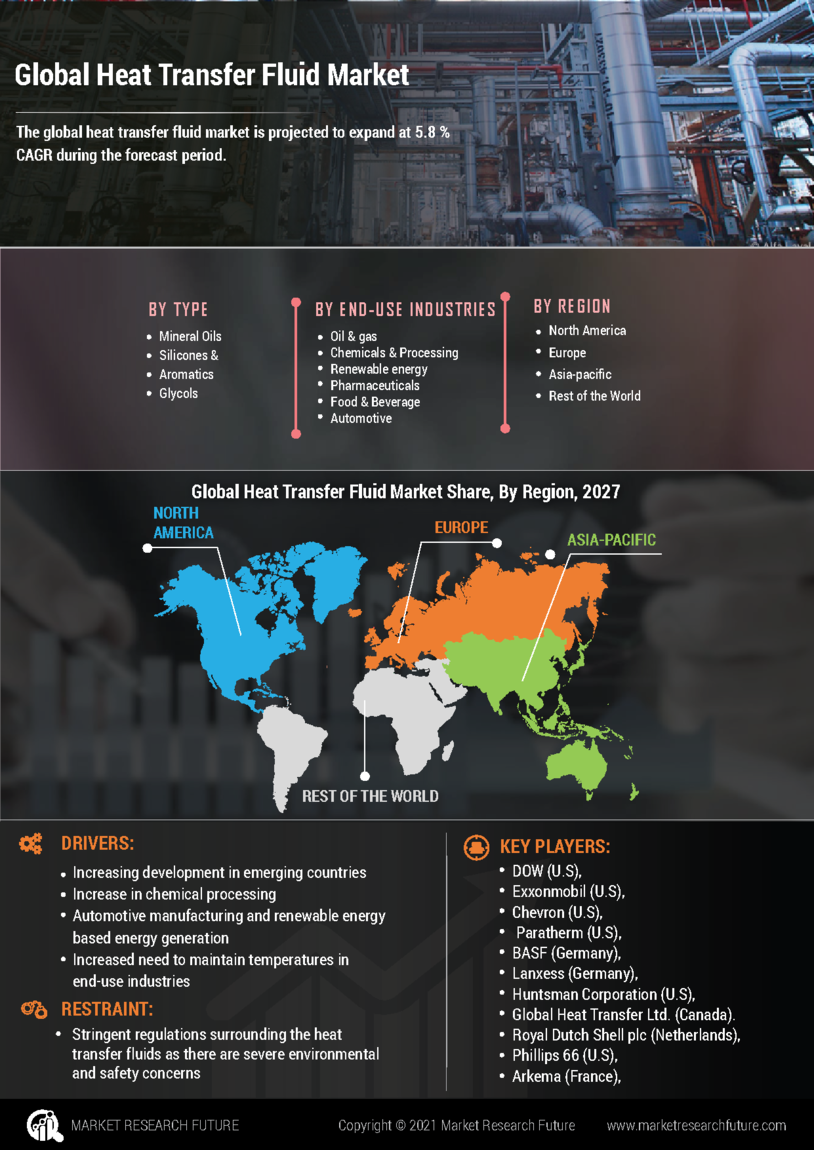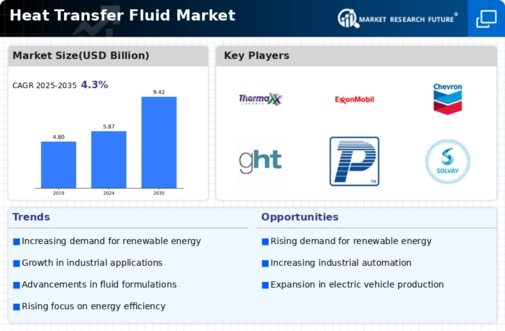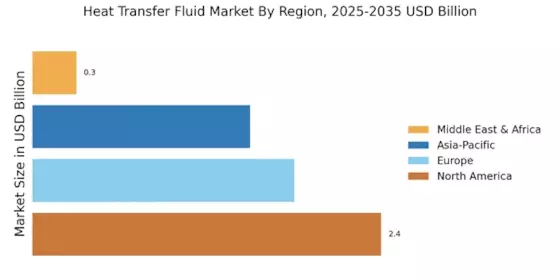Growth in Food and Beverage Sector
The Heat Transfer Fluid Market is witnessing growth driven by the food and beverage sector's increasing demand for efficient thermal management. In food processing, heat transfer fluids are essential for maintaining precise temperature control during cooking, pasteurization, and refrigeration processes. The sector's expansion, fueled by rising consumer demand for processed and packaged foods, necessitates the use of reliable heat transfer fluids that ensure product quality and safety. Market analysis indicates that the food and beverage industry is a significant contributor to the heat transfer fluid market, with a projected increase in demand for food-grade fluids that comply with safety regulations.
Increasing Demand for Renewable Energy
The Heat Transfer Fluid Market is experiencing a notable surge in demand due to the increasing focus on renewable energy sources. As countries strive to meet sustainability goals, the adoption of solar thermal systems and geothermal energy is on the rise. These systems require efficient heat transfer fluids to optimize energy conversion and storage. For instance, the market for solar thermal applications is projected to grow significantly, with heat transfer fluids playing a crucial role in enhancing system efficiency. This trend indicates a shift towards cleaner energy solutions, thereby driving the demand for specialized heat transfer fluids that can operate effectively at high temperatures and under varying conditions.
Regulatory Compliance and Safety Standards
The Heat Transfer Fluid Market is also influenced by stringent regulatory compliance and safety standards. As industries become more aware of environmental impacts, regulations governing the use of heat transfer fluids are becoming more rigorous. This has led to a demand for fluids that not only meet performance criteria but also adhere to safety and environmental regulations. Manufacturers are increasingly focusing on developing eco-friendly heat transfer fluids that minimize environmental impact while ensuring operational efficiency. The need for compliance with these standards is likely to drive innovation and investment in the heat transfer fluid market, as companies seek to align with regulatory requirements.
Expansion of Chemical Processing Industries
The Heat Transfer Fluid Market is significantly influenced by the expansion of chemical processing industries. As these industries grow, the need for efficient thermal management solutions becomes paramount. Heat transfer fluids are essential in various chemical processes, including distillation, reaction, and heat exchange. The increasing complexity of chemical processes necessitates the use of advanced heat transfer fluids that can withstand extreme temperatures and pressures. Market data suggests that the chemical sector is one of the largest consumers of heat transfer fluids, accounting for a substantial share of the overall market. This trend is likely to continue as industries seek to enhance productivity and reduce energy consumption.
Technological Innovations in Heat Transfer Fluids
Technological advancements are reshaping the Heat Transfer Fluid Market, leading to the development of innovative products that offer superior performance. Recent innovations include the formulation of synthetic heat transfer fluids that provide enhanced thermal stability and lower viscosity. These advancements enable more efficient heat transfer, which is critical in applications such as concentrated solar power and industrial heating systems. The introduction of nanofluids, which incorporate nanoparticles to improve thermal conductivity, is also gaining traction. Such innovations not only improve energy efficiency but also extend the operational lifespan of heat transfer systems, thereby driving market growth.


















Leave a Comment